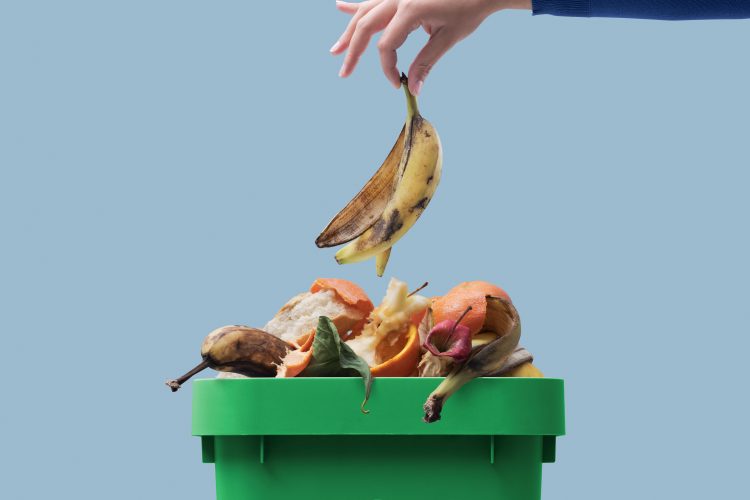Waste not, want not: Rethinking food waste
- Like
- Digg
- Del
- Tumblr
- VKontakte
- Buffer
- Love This
- Odnoklassniki
- Meneame
- Blogger
- Amazon
- Yahoo Mail
- Gmail
- AOL
- Newsvine
- HackerNews
- Evernote
- MySpace
- Mail.ru
- Viadeo
- Line
- Comments
- Yummly
- SMS
- Viber
- Telegram
- Subscribe
- Skype
- Facebook Messenger
- Kakao
- LiveJournal
- Yammer
- Edgar
- Fintel
- Mix
- Instapaper
- Copy Link
Posted: 14 November 2023 | Mathilde Chatin | No comments yet
Addressing the global issue of food waste, Mathilde Chatin explores innovative solutions, from consumer awareness and donations to repurposing waste for animal feed and bio-fertilisers.


By Mathilde Chatin
900 million tonnes. That is how much food is thrown away worldwide every year according to the United Nations (UN).
The UN Environment Programmes’ Food Waste Index revealed that 17 percent of the food available to consumers – in shops, households, and restaurants – goes directly into the bin. Around 60 percent of that waste is in the home. All of this puts pressure on our environment, supply chains and food security that are all already under strain from international conflict, changing weather patterns and increasing populations across the globe.
Meanwhile, the number of people affected by hunger has been on the rise since 2014 and food banks in the UK are crying out for donations to meet demand. The profligate squandering of our natural resources harms our environment and obstructs food security.
The ugly veg problem
New research, by the World Wide Fund for Nature (WWF) has revealed a ‘hidden crisis’ in the fruit and veg sector. Fruit and vegetables make up more than a third of the almost 3.3 million tonnes of food waste each year. And many of those fruits and vegetables never even leave the farm gate.
According to the report, almost half (48 percent) of the food wasted on farms is wasted pre-harvest. In most cases, it is left in fields because farmers do not believe it will meet standards on aesthetics. Each year an estimated 50 million tonnes of farmed fruit and vegetables grown in Europe are discarded for being the wrong size or misshapen – that means a third of the crops harvested never even reach supermarket shelves. In addition, up to 40 percent of all fruit and vegetable crops are wasted because they are ‘ugly’. The result is that thousands of tonnes of tasty, healthy vegetables are binned, because supermarket buyers want their veg to “better-looking”. Among consumers, there must be greater awareness of the resources needed to produce food. There needs to be a better understanding of the link between food waste and squandering those scarce resources.
Waste not, want not
The average UK household spends £810 a year on food they never eat. In total, UK homes throw away 7.3 million tonnes of food and drink every year. This food waste and waste from food service ends up in landfills where it generates methane which contributes to global warming and the breakdown of the ozone layer.
Realistically, it is difficult to imagine a world with zero food waste. But there are innovative steps – from the personal to the political – which can dramatically reduce it, resulting in personal savings and positive environmental impacts. Conscious buying, meal boxing, and reusing are all positive, individual actions that move us in the right direction.
Education for the nation
Consumer education around the extra expense and environmental impact of the reluctance to buy ‘ugly’ vegetables is urgently needed. Some stores are already taking a lead on this, marketing ‘odd shapes and sizes’ for fruit and vegetables.
There is also growing evidence that more UK consumers are prepared to accept ‘wonky’ fruit and vegetables, amid concerns over sustainability and increasing food prices.
Donations big and small
At the household level, small measures such as donating excess food to a food bank can make a difference in local communities. There are an increasing number of apps which alert customers to unsold or soon-to-expire produce that can be purchased at a steep discount, or collected for free. More and more businesses are also realising the financial, reputational and environmental damage of wasting food.


There are currently at least 1172 food banks in the UK, as well as a further 1400 Trussell Trust food banks
Partnerships between companies and local homelessness charities see unsold food distributed at the end of the day, to those in need. Social enterprises collect unsold food from supermarkets and warehouses before distributing it to charities who can cook it for large groups.
Animal feed
Waste fruit and vegetables can be repurposed – without processing – as animal feed. Unfortunately, this is sometimes prevented by well-intentioned but overly rigorous safety protocols, which dictate that all food must be sorted, screened, ground, dewatered, heated and dried before being given to animals. This was intended to eliminate the former practices of ‘swill feeding’ or ‘garbage feeding’ pigs, but can prevent perfectly healthy, nutritious, but damaged vegetables being recycled efficiently.
These foods are relatively high in fibre. Research found that this type of food waste can be a potential feedstuff for ruminants such as sheep and pigs, given their ability to use fibre as an energy source. Recycling these wastes would minimise feedstuff competition and environmental impacts associated with disposal of such waste in the landfills.
Bio-fertilisers
The Food and Agriculture Organization of the United Nations (FAO) estimates that globally, 45 percent of fruits and vegetables are wasted along the supply chain. But with a little innovation, these can be reprocessed into functional and valuable products. Through the process of in-vessel composting, fruit and vegetable waste can be converted into a natural soil conditioner. Processors take food waste and convert it into a sustainable, reliable and high-nutrient fertiliser. The relatively low production costs of these bio-fertilisers makes them a highly competitive, safe and profitable product along with renewable energy.
Our current food system puts pressure on our environment, economy and resources. Every time we eliminate food waste – by donating, composting or re-purposing uneaten food – we save money and fuel while helping the planet and our local communities. There is a place for food chain participants to educate consumers on the implications of food waste and solutions to limit its negative impact. Similarly, businesses providing solutions to food waste will benefit from support communicating their impact to stakeholders.
About the author
Mathilde Chatin is Managing Director at Penta Group where she is involved in corporate communication projects for clients in the food and agriculture industry.
Related topics
Environment, Food Waste, Research & development, The consumer, World Food
Related organisations
Food and Agriculture Organization of the United Nations (FAO), Penta Group, World Wide Fund for Nature (WWF)








